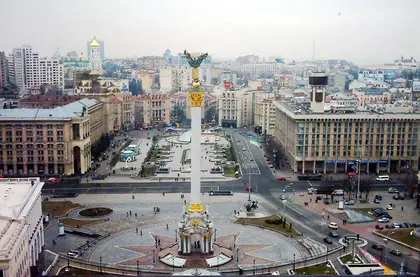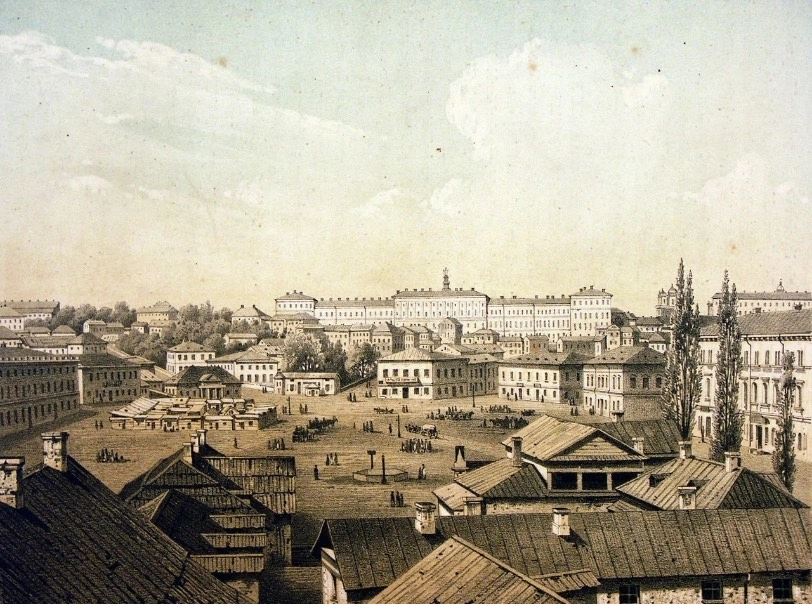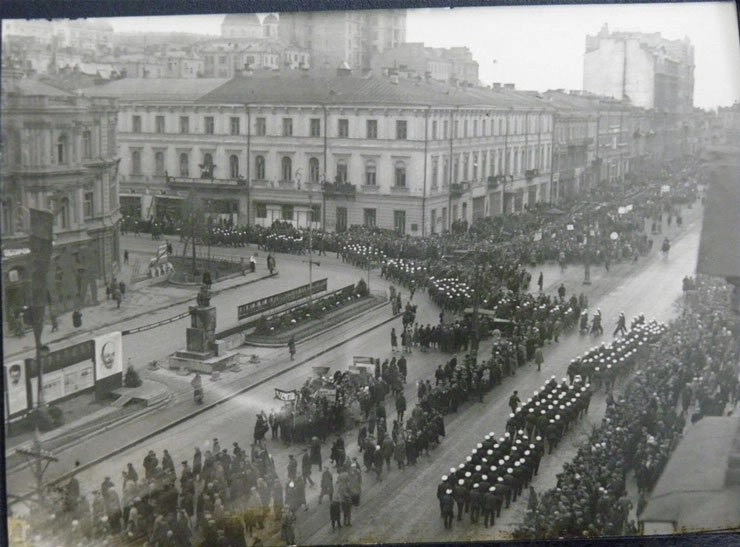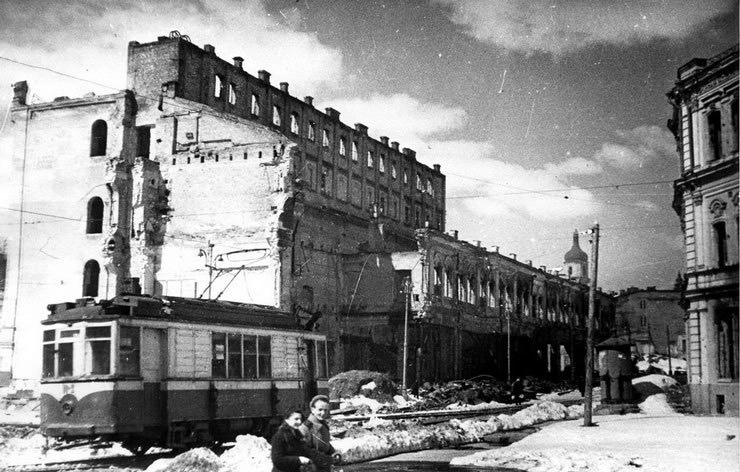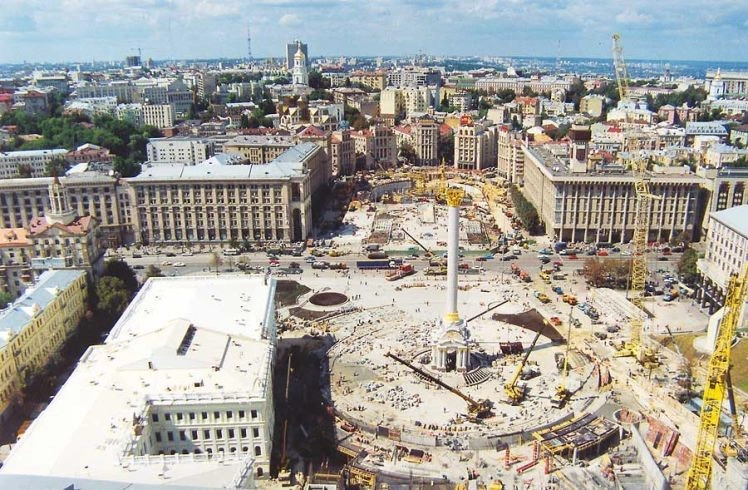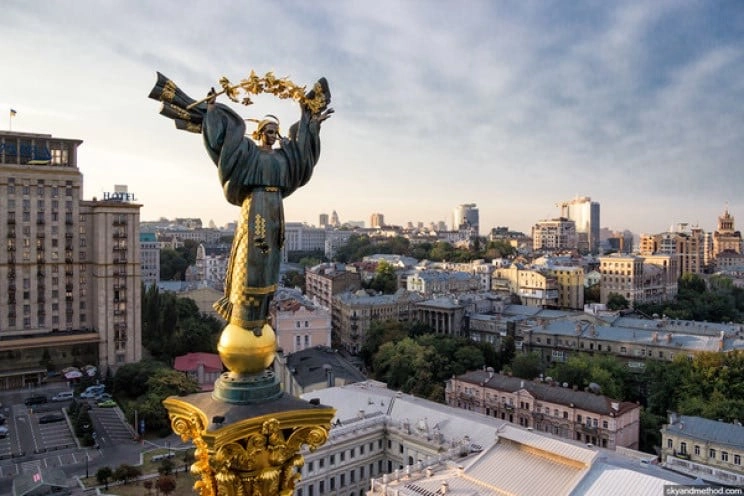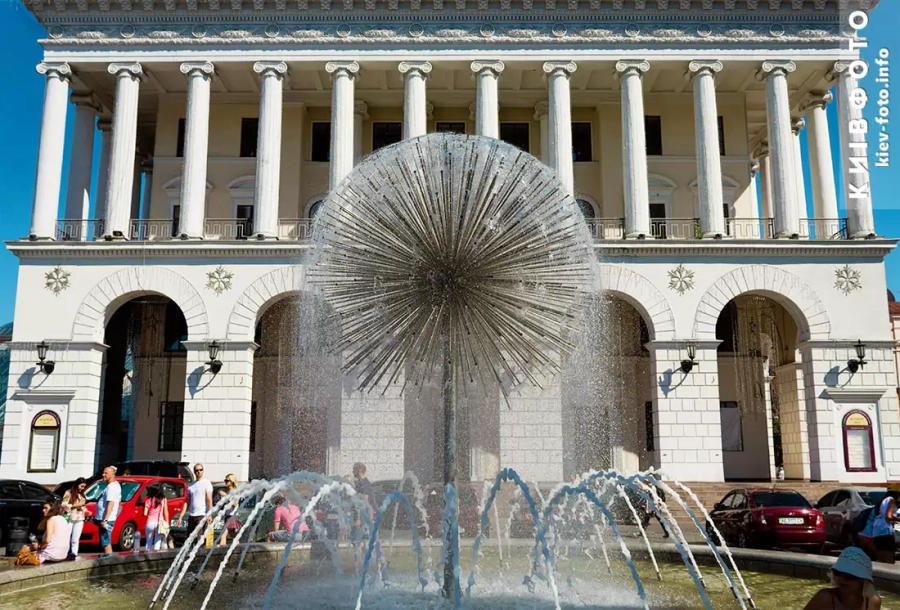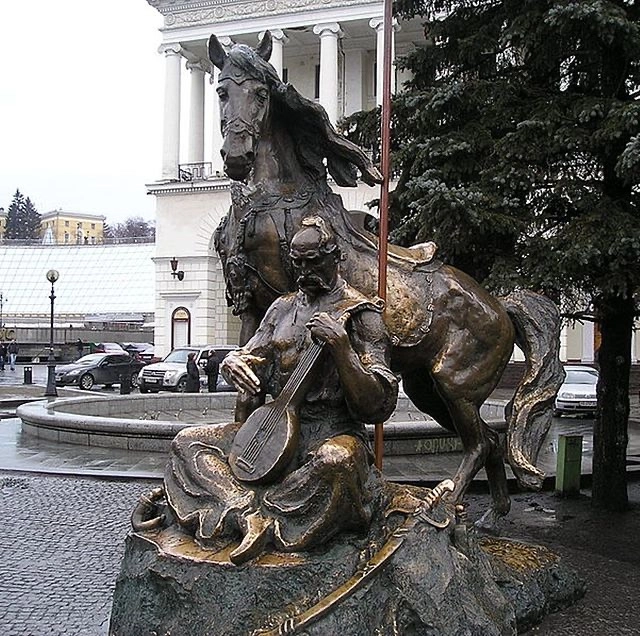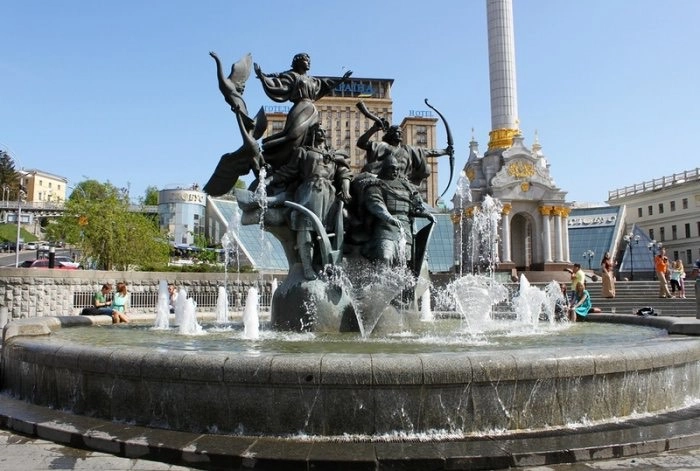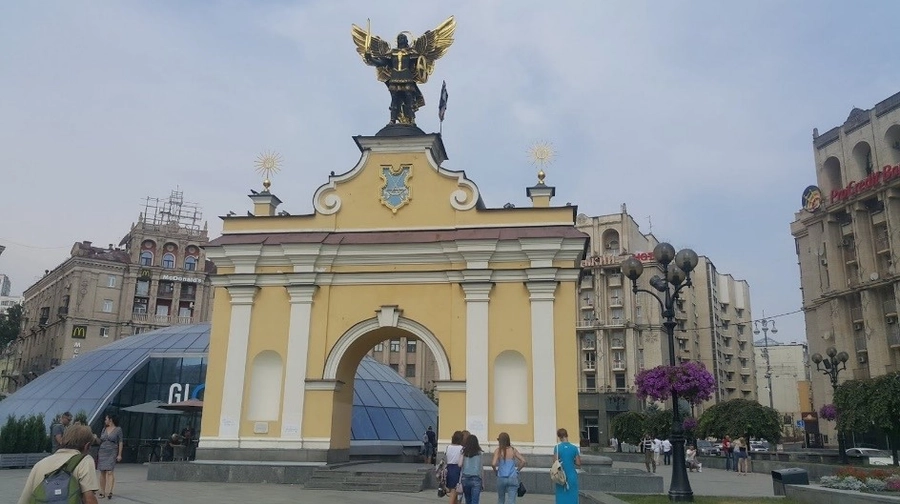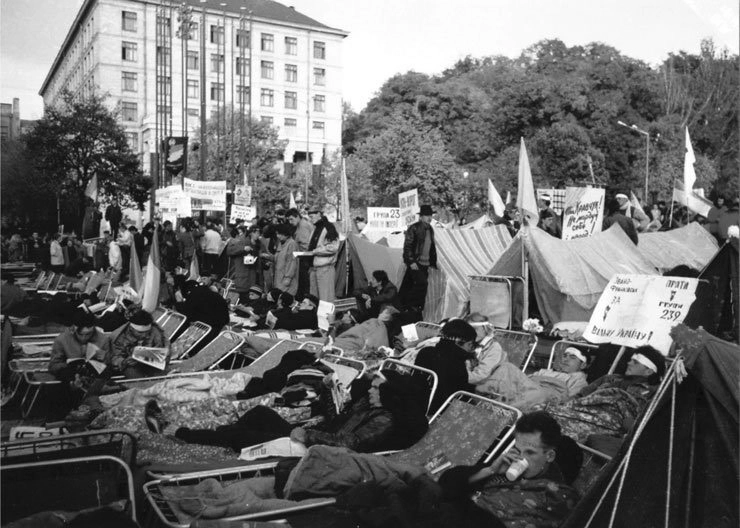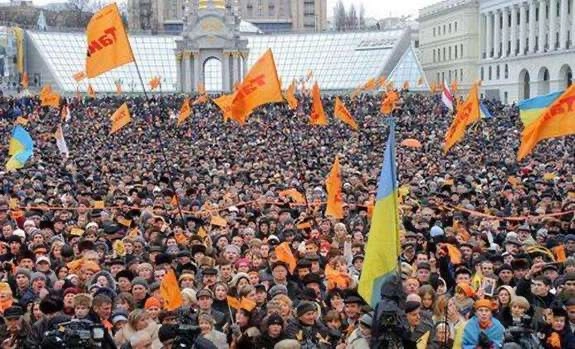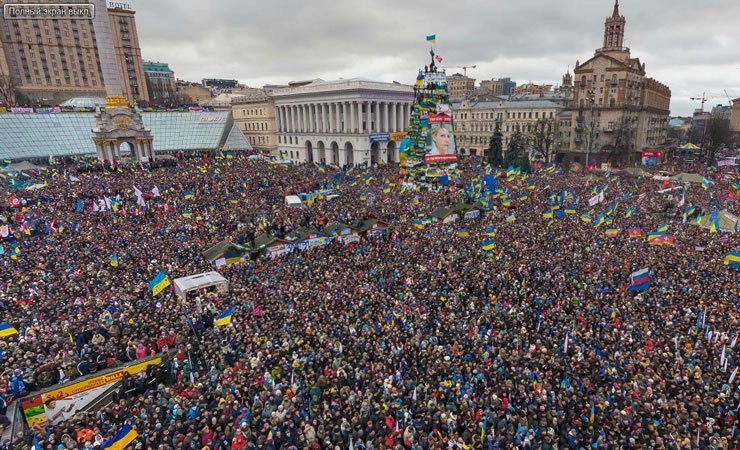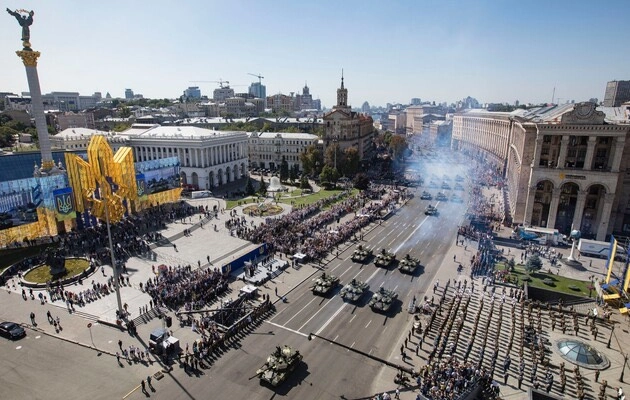Maidan Nezalezhnosti (Independence Square) – the most visited place in Kyiv and the venue of the most important official and public events – has a relatively short but very bright and dramatic history.
Kyiv’s central square got its present name two days after Ukraine proclaimed independence on Aug. 24, 1991.
JOIN US ON TELEGRAM
Follow our coverage of the war on the @Kyivpost_official.
The word Maidan is of Persian origin. In Farsi it means “square” or “open ground,” similar to the Greek agora. The word was borrowed from Turkish in the 16th century and has since been used in Ukraine to denote the central square of a village or city. But the 2004 Orange Revolution and the 2014 Revolution of Dignity added another meaning to this noun and its derivatives: “mass rally,” “campaign,” or “movement” (mostly of protest).
In the 11th-century chronicles, the area of the present-day Maidan was mentioned as a swamp, and the deep ravine that ran southwards from it was called “Khreshchatiy” (meaning “shaped like a cross”), hence the name of the central street – Khreshchatyk – that cuts through the square.
A few years before the Mongol-Tatar invasion in 1240, fortification walls were built along the east side of the ravine, but they did not save the city from Khan Batu’s invading horde. What was left of those walls stood there until 1833.
For several centuries, the area was just an overgrown marshy ground. As it gradually dried out, the first wooden houses were built along the slopes of the ravine and the first brick houses appeared there in the mid-1750s.
In the early 19th century, the place was still a waste ground with grazing goats and the small Khreshchatyk stream running down the ravine. The only structure in the area surrounded by earth walls and bulwarks was a watermill on the stream.
In 1851, the first large brick building – the Hall of the Nobility – rose on Khreshchatytska Square, as it was named then. The square with a big marketplace soon became a popular venue for fairs, circus shows, festivals, and other mass public events.
Marketplace on Khreshchatytska Square, 1850s
In 1876, the square was renamed Dumska after the newly built City Duma (City Hall: the Russian word Duma meant “council,” “assembly”).
In 1912, the Ginsburg Skyscraper, the first high-rise building in Ukraine, was constructed near Dumska Square.
In March 1919, soon after the Bolshevik troops captured Kyiv and installed Soviet authorities in the city, the square was renamed Radianska (Ukrainian for “Soviet”). Three years later, a big monument to Karl Marx was erected there.
Red Army parade on Radianska Square and Khreshchatyk Street, 1934
In 1935, Radianska Square was renamed after Mikhail Kalinin, the then chairman of the USSR Supreme Soviet.
During WWII, nearly all the buildings on Kalinin Square and Khreshchatyk Street were destroyed – mostly by Soviet saboteurs just after the Germans arrived to occupy them.
The construction of new ones was completed in the mid-1950s, with German POWs providing much of the labor.
Maidan in ruins, 1944
In 1977, the square was reconstructed, a new subway station opened under it, and a huge red granite Monument to the October 1917 Bolshevik Revolution was erected. The square was renamed again, now Zhovtnevoyi Revoliutsiyi (October Revolution).
Soon after Ukraine became independent in 1991, the monument to the Bolshevik coup was demolished and new trees were planted along the perimeter of the square.
A decade later, the Maidan underwent another major reconstruction, actually a total makeover which gave the square its present appearance.
Maidan under reconstruction, 2001
The centerpiece of Maidan is the Independence Stela – a 52-meter white marble-faced pillar topped with a 10-meter bronze statue of a young girl in the national Ukrainian costume holding a guelder-rose branch over her head.
The pillar rests on a Ukrainian baroque pedestal with gilded ornaments. The guelder-rose branch, the ribbons in the wreath on the girl’s head and the ornaments on her costume are also gilded.
Statue on the Independence Stela symbolizing Ukraine
In order to secure stability against possible earthquakes or strong winds, the engineers installed a 1.5-ton pendulum in the base of the 20-ton statue. The pendulum suspended inside the hollow pillar damps externally caused oscillations and the armored frame of the pillar makes it resistant to winds of any force. There is also a spiral staircase inside the pillar.
Pictures of the Independence Stela can be found on postcards, badges, stickers, posters, calendars and souvenir magnets that are readily bought by tourists.
Water streams down from its foot in a 30-meter-wide cascade near a ball-shaped fountain called “Dandelion,” which resembles a dandelion puff, as if growing from the neatly mown emerald lawn, and looks especially beautiful in front of the white walls and entrance arches of Kyiv Conservatory.
Dandelion fountain opposite Kyiv Conservatory
Next to the fountain stands a life-size bronze monument to the legendary Cossack Mamai beside his horse. In peacetime, the monument always attracted crowds of picture-taking tourists and kids who enjoyed mounting the bronze horse.
Monument to Cossack Mamai
To the left of the stela stands another unusual and beautiful monument combined with an illuminated fountain. Its base is a large bowl from which water spurts up like a tall stem of a flower. The monument itself is a boat with Kiy, Shchek, Khoryv and their sister Lybid, the legendary founders of Kyiv.
Monument to Kyiv’s founders
Behind the Independence Stela there is a wide glass-paned gallery that opens a magnificent view on the square.
The opposite side of the Maidan across Khreshchatyk Street is a 100m x 200m pedestrian area designed like a boulevard with an alley of trees and fountains and the geometrically shaped glass roofs of a big underground shopping mall.
While digging a 20-meter-deep foundation pit for the mall, builders found parts of old stone and wooden structures, earthenware fragments and valuable artifacts. The parts of a wooden structure found in the west corner of the square were thoroughly studied by archeologists, which delayed reconstruction works for several years.
According to old chronicles confirmed by radiocarbon assays, the structure was the so-called “Liadska Brama” (Folk Gate) built in the 1030s as the southwest entrance to Kyiv. It was also a part of the defense line around the city built during the reign of Prince Yaroslav the Wise (father of Anna, the queen of France).
In that place builders erected a symbolic gate topped with a sculpture of the winged Archangel Michael, the heavenly patron of Kyiv.
Liadska Brama
In October 1990, when Ukraine was still a republic of the USSR, several dozen university students started a hunger strike on the granite pavements of the square, which later grew into a countrywide civil disobedience campaign. The demonstrators demanded to nationalize the Communist Party’s property, sack the government consisting of old Soviet apparatchiks and hold an early parliamentary election.
Students protesting on Zhovtnevoyi Revoliutsiyi Square, October 1990.
The public campaign, which was later called “the Revolution on Granite,” resulted in the government’s resignation. But more importantly, it consolidated the democratic forces in the Ukrainian parliament, where the Communist majority still prevailed.
From December 2000 till March 2001, the Maidan saw mass anti-government demonstrations and protest rallies. Then, in late November 2004, nearly half a million people flooded the Maidan and the adjacent streets to protest against widespread vote-rigging in the presidential election in favor of the pro-Russian candidate, Viktor Yanukovych.
Most of them wore orange ribbons, the campaign color of the democratic, pro-Western candidate Viktor Yushchenko, hence the name “Orange Revolution.”
Maidan during the Orange Revolution, December 2004
And it was under the people’s non-violent pressure that the Supreme Court overruled the fixed election returns and called a repeat vote. In January 2005, tens of thousands gathered on Maidan to watch and hail Yushchenko’s inauguration.
Almost a decade later, in early December 2013, after riot police brutally beat and dispersed peaceful demonstrators against the pro-Russian leadership’s backdown on European integration, Maidan saw the rise of unprecedented mass protests.
The standoff culminated in the massacre of more than a hundred unarmed protesters and the ouster of the disgraced president Yanukovych in February 2014. That tremendous civil upsurge was called the Revolution of Dignity and was lauded by the democratic international community as a commendable example of people-driven change.
Maidan in December 2013, several weeks before mass killings of peaceful protesters
The Revolution of Dignity (which Kremlin propaganda has since claimed was a “Western-instigated neo-Nazi coup d’état”) was followed by the election of a democratic leadership and, unfortunately, formidable upheavals and human tragedies.
Taking advantage of the general turmoil and confusion, Russia grabbed the Crimean Peninsula and fomented separatist takeovers in Ukraine’s eastern and southeastern regions. In April 2014, the new Ukrainian government launched a counterterrorism operation and within three months retook control of almost three-quarters of the rebel-held territory.
But then, Moscow sent troops to Ukraine, unleashing an undeclared war in the Donbas that killed and maimed thousands and displaced nearly two million. During the war that ground for almost eight years, Maidan saw the funerals of heroes who gave their lives defending Ukraine. It also saw spectacular Independence Day parades and other mass public events that demonstrated the nation’s consolidation.
Military parade on the 30th anniversary of Ukraine’s independence, Aug. 24, 2021
Russia’s full-scale invasion in February 2022 changed Maidan’s appearance and atmosphere: the whole area around the Independence Stela is now occupied by stands with lists and portraits of fallen Ukrainian heroes, pictures of destroyed Ukrainian cities and villages, and other graphic evidence of Russian war crimes.
Very hopefully, this horrible war will end someday in Ukraine’s victory and Maidan will never again see bloodshed, or any violence, or funerals of Ukrainian heroes. Very hopefully, the heart of this ancient and ever-young city will thrive again with everyday hustle and bustle, with festive illuminations and fireworks, and with children’s laughter.
You can also highlight the text and press Ctrl + Enter


